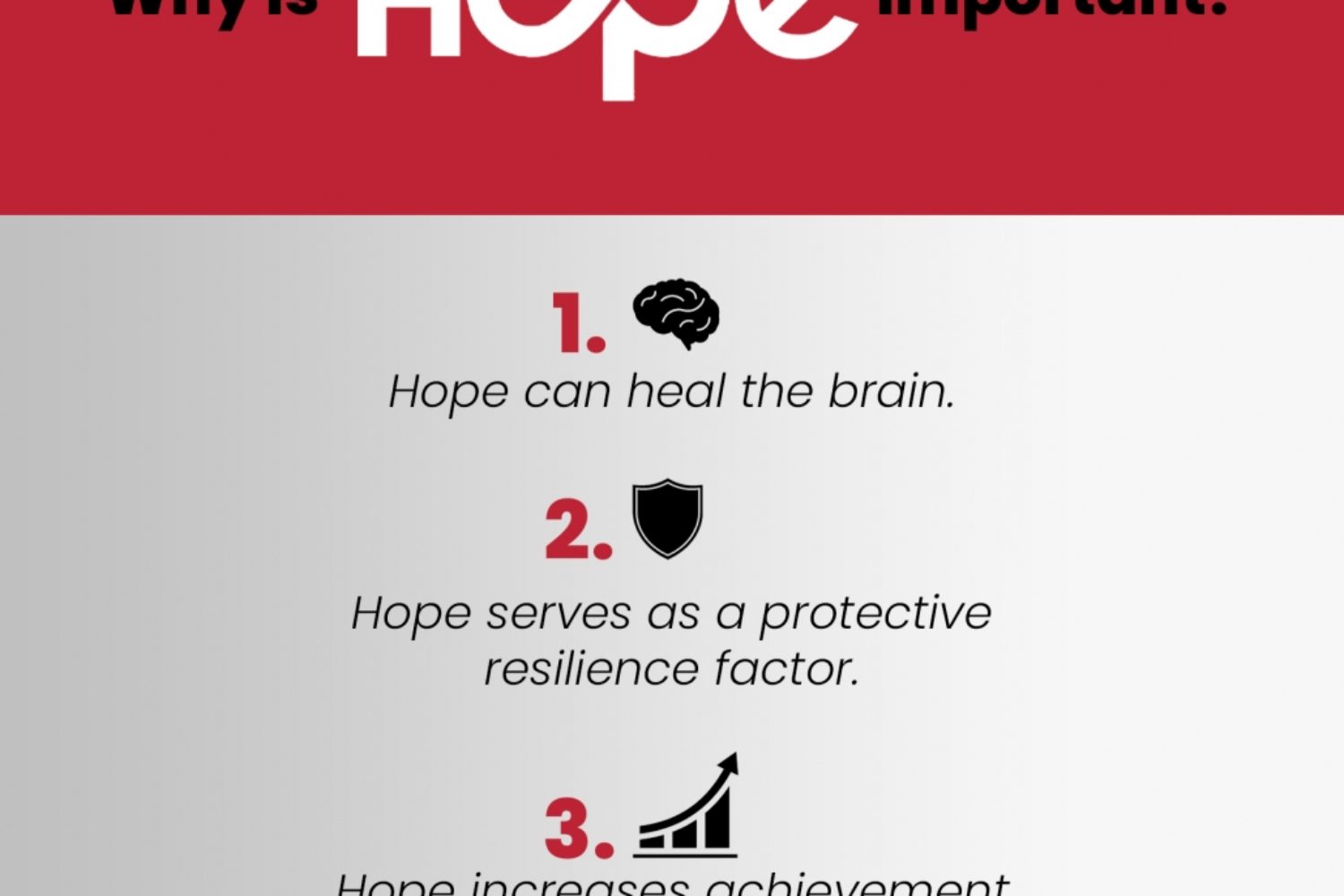Hope can heal the brain
Hope preserves well-being when challenged with adverse and traumatic events in life. Those with higher hope have less anxiety than those with lowers hope. Therefore, higher hope individuals suffer less of a negative impact when traumatic life events occur.
We know the impact of trauma can often result in irrational fear, toxic stress, hypervigilance, anxiety, depression, and brain injury. When children feel “trapped” due to trauma and losing control in their lives, hope withers, and the consequences can be detrimental.
Many times children with traumatic histories often struggle focusing or paying attention. This inability to focus directly relates to difficulties in goal setting and goal pursuit essential in the science of hope.
Understanding that hope can heal the brain is essential to your role as a “hope giver” for vulnerable children. With this understanding, you can direct your focus to teach children self-regulation and self-empowerment so they can set goals and stay the course long enough to get from point A to point B.
Hope serves as a protective resilience factor
Research over the years conveys that hope is a substantial component that influences a child’s resilience and overall achievement. In a study I conducted in 2019 on 31 boys in foster care, my research found that it allowed them to increase resilience when the boys experienced goal failure.
In another study, Dr. Chan Hellman found that hope has been shown to serve as a protective resilience factor when facing stressful life occurrences among children who scored higher on the Hope Scale also scored higher on the resilience measurement, reflecting a strong positive correlation. For over a decade, research has been consistent in showing that high hope people do better in life than those with low hope, and high hope helps us overcome trauma better than low hope.
What does this mean for you and the children you serve? Giving children hope gives them the tools and the strength needed to get back up when knocked down. It provides that child who has experienced their fifth foster home in one year to keep striving for a brighter future, even when they feel like giving up.
Hope increase overall achievement and future stability
We know the staggering statistics: A national report conducting in 2017 showed that more than half of children in foster care drop out of school and 24% have either been suspended or expelled and another national report done the same year showed foster children to have higher rates of absenteeism and disciplinary referrals, below grade level academic outcomes, higher rates of grade retentions, and notably lower graduation rate. But their failure to achieve is not just limited to the classrooms; they also have higher rates of criminality, incarceration, poverty, unemployment, and homelessness.
Achievement is not about sending the most vulnerable children to the highest performing schools and increasing their GPA’s so they can be at the top of their graduating class. It is about helping them establish and accomplish their personal goals to pursue a healthy life of stability and happiness.
I want to share a story with you about a young lady I had the pleasure of working with several years ago. I had just graduated from college and had my first real job as a caseworker for a transitional living program when I was introduced to Rachel. When I met Rachel, she had just aged out of foster care and had gone through the most traumatic experience of her life. Rachel lived with her best friend, who also aged out of custody, and her boyfriend. Rachel’s boyfriend was extremely abusive, and one day while she was at work, her best friend decided to confront the boyfriend about the abuse towards Rachel. Things got heated, and the boyfriend ended up murdering Rachel’s best friend. For days Rachel had no idea about where her best friend was until she found her body. Rachel was wrecked at the loss of her best friend and shattered that her boyfriend was the murderer and now facing multiple years in prison.
I remember the first time I met Rachel, which was shortly after the death of her friend; she was fighting severe anxiety but greeted me with the warmest smile. Our first meeting Rachel spent time talking to me about the impact of her traumatic experience; however, the majority of our time, Rachel was focused on the goals she still had for herself. After working with Rachel for a few months, she obtained her GED, CNA license, secured employment, moved into her apartment, and purchased her first car. How was this possible after such a traumatic experience? Well, Rachel had hope, which protected her resilience, making it possible to get back up and keep moving forward.
Regardless of what role you play in a vulnerable child’s life, you are their “hope giver.” This means that you are a source of hope and someone responsible for helping them build the agency and pathways to accomplish their identified goals.
Every child deserves something to look forward to, and as Bishop Desmond Tutu would say, “Hope is being able to see that there is light despite all the darkness.”
So today, I want to encourage you to continue being a “hope giver” for children. Keep shining a light on the dark path they are on, providing hope and showing them that their future is brighter and playing in it.


